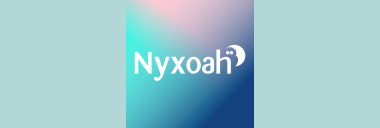G1 Therapeutics Presents Phase 1 Data at ASCO Describing Favorable Safety Profile and Evidence of Antitumor Activity of Rintodestrant Combined with Palbociclib in Patients with ER+/HER2- Advanced Breast Cancer
Rhea-AI Summary
G1 Therapeutics, Inc. (GTHX) reported positive results from its Phase 1 study of rintodestrant, an oral selective estrogen receptor degrader, in combination with palbociclib for ER+/HER2- advanced breast cancer. The combination treatment demonstrated a significant increase in the clinical benefit rate, rising from 30% with rintodestrant alone to 60% with the combination. The treatment was well tolerated, with no serious adverse events reported. The study suggests potential effectiveness, especially in patients with ESR1 variants, further warranting clinical evaluation.
Positive
- Clinical benefit rate increased from 30% to 60% with rintodestrant and palbociclib combination.
- No serious adverse events or dose reductions reported, indicating excellent tolerability.
- Safety profile consistent with existing data on palbociclib; common side effects were manageable.
Negative
- None.
News Market Reaction 1 Alert
On the day this news was published, GTHX declined 0.57%, reflecting a mild negative market reaction.
Data tracked by StockTitan Argus on the day of publication.
- Combination of Rintodestrant and Palbociclib was Very Well Tolerated with No Reported Discontinuations due to Treatment-Emergent Adverse Events (TEAEs) -
-
RESEARCH TRIANGLE PARK, N.C., June 04, 2021 (GLOBE NEWSWIRE) -- G1 Therapeutics, Inc. (Nasdaq: GTHX), a commercial-stage oncology company, today presented results from its Phase 1 study of its oral selective estrogen receptor degrader (SERD), rintodestrant, demonstrating the drug was very well tolerated and did not result in additional or more severe toxicities when added to palbociclib for the treatment of ER+/HER2- advanced breast cancer. In addition, encouraging antitumor activity was observed in the study, with a doubling of the clinical benefit rate (defined by percentage of patients with either confirmed complete or partial response or stable disease lasting ≥ 24 weeks) from 30 percent with rintodestrant monotherapy to 60 percent with the combination of rintodestrant and palbociclib. This effect included patients with tumors harboring ESR1 variants, which are known to modulate breast cancer severity and resistance to hormone therapy. These data are being presented at the American Society of Clinical Oncology (ASCO) annual virtual meeting, and the posters are available in the scientific publications section of G1’s website.
“Between
The Phase 1, first-in-human, open-label study evaluated rintodestrant in women with ER+/HER2- advanced breast cancer after progression on endocrine therapy. The study comprised three parts: dose escalation of monotherapy rintodestrant (part 1), dose expansion of monotherapy rintodestrant (part 2), and rintodestrant in combination with palbociclib therapy (part 3). The results of part 1 and 2 were presented at the 2020 San Antonio Breast Cancer Symposium (SABCS) (2020 poster). Forty participants in the third part of the study received 800 mg of continuous rintodestrant once daily combined with 125 mg of palbociclib once daily for 21 days in 28-day cycles. This patient population had received a high degree of prior chemotherapy in the advanced setting (
Key study findings with a median duration of treatment of 6.2 months in the ongoing Phase 1 combination trial presented in the poster include:
Safety:
- Rintodestrant combined with palbociclib was very well tolerated, with no rintodestrant-related serious adverse events (SAEs) or dose-reductions reported.
- The addition of rintodestrant to palbociclib did not result in additional or more severe toxicities, in particular, nausea, vomiting, or diarrhea.
- The most common treatment-emergent adverse events (TEAEs) of neutropenia and leukopenia are consistent with the known safety profile of palbociclib, as previously reported.
- No discontinuations or deaths due to TEAEs were reported.
- One case (
3% ) each of diarrhea and fatigue was reported, but neither was considered related to the rintodestrant/palbociclib.
Antitumor Activity:
- The clinical benefit rate (CBR) doubled from
30% to60% when palbociclib was added to rintodestrant, suggesting the potential for favorable antitumor activity in patients with ER+/HER2- advanced breast cancer, including in patients with tumors harboring ESR1 variants. - The CBR among patients with early relapse (first metastatic recurrence while on adjuvant ET for at least 2 years’ duration, or within 12 months of completing adjuvant ET) was
73% (8/11). - In the full analysis set,
65% of patients experienced stable disease (SD). - Median progression-free survival was 7.4 months (
95% CI: 3.7 not reached), although the data are not yet mature as of the cutoff date (April 7, 2021).
The Company is in the process of evaluating partnering options for rintodestrant.
About G1 Therapeutics
G1 Therapeutics, Inc. is a commercial-stage biopharmaceutical company focused on the development and commercialization of next generation therapies that improve the lives of those affected by cancer, including the Company’s first commercial product, COSELA™ (trilaciclib). G1 has a deep clinical pipeline and is executing a tumor-agnostic development plan evaluating COSELA in a variety of solid tumors, including colorectal, breast, lung, and bladder cancers. G1 Therapeutics is based in Research Triangle Park, N.C. For additional information, please visit www.g1therapeutics.com and follow us on Twitter @G1Therapeutics.
G1 Therapeutics™ and the G1 Therapeutics logo are trademarks of G1 Therapeutics, Inc.
Forward-Looking Statements
This press release contains forward-looking statements within the meaning of the Private Securities Litigation Reform Act of 1995. Words such as "may," "will," "expect," "plan," "anticipate," "estimate," "intend" and similar expressions (as well as other words or expressions referencing future events, conditions or circumstances) are intended to identify forward-looking statements. Forward-looking statements in this press release include, but are not limited to, those relating to expectations for the therapeutic potential of rintodestrant, and the possibility to realize the economic impact in the US market presented in the scientific analyses described above, and rintodestrant may fail to achieve the degree of market acceptance for commercial success, are based on the company’s expectations and assumptions as of the date of this press release. Each of these forward-looking statements involves risks and uncertainties. Factors that may cause the company’s actual results to differ from those expressed or implied in the forward-looking statements in this press release are discussed in the company’s filings with the U.S. Securities and Exchange Commission, including the "Risk Factors" sections contained therein and include, but are not limited to, the company’s ability to complete a successful commercial launch for COSELA (trilaciclib); the company’s ability to complete clinical trials for, obtain approvals for and commercialize any of its product candidates other than COSELA (trilaciclib); the company’s initial success in ongoing clinical trials may not be indicative of results obtained when these trials are completed or in later stage trials; the inherent uncertainties associated with developing new products or technologies and operating as a commercial-stage company; and market conditions. Except as required by law, the company assumes no obligation to update any forward-looking statements contained herein to reflect any change in expectations, even as new information becomes available.
G1 Therapeutics Contact:
Will Roberts
Vice President, Investor Relations & Corporate Communications
919-907-1944
wroberts@g1therapeutics.com







